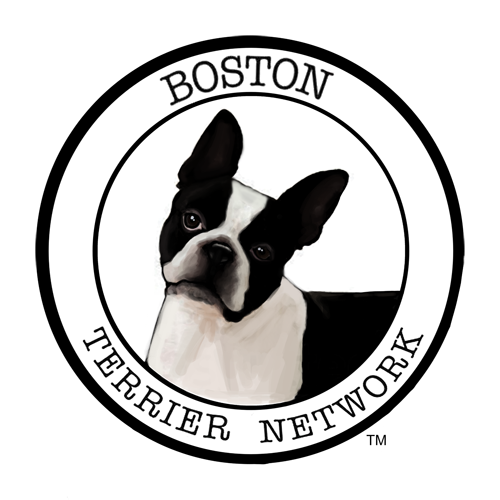469 Object Sucking in Dogs - an unexplained phenomenon
Object Sucking in Dogs - an unexplained phenomenon
As babies, many humans become attached to a comforter or cuddle, which is usually a piece of cloth or a favourite soft toy. The image of a human infant clutching their comforter and sucking their thumb is a familiar one.
Blanket, bed or toy sucking in canines seems to be the doggy equivalent, and the behaviour seems to occur at a time when they are getting ready to sleep as in human infants.
This phenomenon only occurs in a handful of dogs, but, unlike human infants, it seems to be something they do not grow out of as they get older.
Dogs that do this usually select something soft and cuddly, often a soft toy or a piece of their bed or fur fabric or other soft material and curl up with it in their beds.
If it is not quite the right shape, they may push it around with their paws and mould it until it fits into their mouth.
Some just hold their favourite object in their mouths, while others actively suck on it.
A few dogs will even knead with their paws while they do this. This continues until they fall asleep.
Once they start this habit, it seems to continue throughout their adult life.
Dougal the Westie, is a 'sucker' and has been doing so since he was 3 months old and Sam the doberman is 12 years and still going strong.
Owners who try to get them to kick the habit are often unsuccessful.
Dogs deprived of their favourite 'cuddle' will often substitute another object if they can and, if deprived of everything, will go without, but will go back to doing it as soon as they can get hold of something suitable.
There seems to be nothing wrong with allowing dogs to carry out this behaviour.
The object used may need to be washed occasionally to prevent it becoming unhygienic, but no long term damage seems to be done, the behaviour is not disruptive and if the dog is comforted by the action, why not?
It may even be a necessary one since actions are seldom performed without good reason.
Without knowing what that reason is or why it comforts them, preventing it may result in unnecessary deprivation and distress for the animal.
Some owners may encourage the habit which tends to increase the dependence on the object.
One owner reported that the cuddly toy used by her puppy had to be taken with them when they went outside. Otherwise the puppy could not relax enough to go the toilet.
For this dog, the toy could have had a dual role, being used as a comforter at night and being used as a toy to demand attention and games during the day. This could get out of hand and these owners would be wise to restrict the use of the toy to times when the puppy wishes to sleep.
Object sucking can occur in any breed of dog; it has been known in working dogs like Border Collies, gun dogs like Springer Spaniels, terriers like Westies, hounds like Daschunds and crossbreds.
It does seem to be quite common in Dobermans, a breed well known for their flank-sucking behaviours.
Flank-sucking, which is a condition where the dog sucks on the very top of one of its hind legs, can become pathological in some cases where it is done excessively, almost with compulsion, and eventually causes damage to the skin.
Blanket or bed-sucking is, however, usually not harmful, but it may be a less exaggerated manifestation of the same syndrome.
The fact that flank-sucking does seem to run in lines and is seen in family groups suggests a genetic component to the problem.
Cassie is a 7 year old Doberman whose four brothers and sisters also do similar things.
Cassie's owner was eventually forced to buy her T-shirts especially for her 'habit'!
Cassie insisted on stealing things out of the laundry basket and lovingly shaping them into something resembling a cricket ball.
Several T-shirts, jumpers, underwear and even a King size duvet were given this treatment until her owners gave in and bought her several T-shirts.
Now there is no raiding of the laundry and a clean T-shirt is always available while the others are being washed.
Scent does seem to play a role in this behaviour.
Items which smell of the pack or the individual are more likely to be chosen and a clean object may hold less attraction than a smelly one.
Dogs that become fearful when left alone will often collect items that smell of the owner and may chew them until there is enough material to surround themselves with.
Perhaps sucking or holding something that smells of the pack leader or of something familiar is comforting for animals who sense of smell is so much more sensitive than our own.
Sweet-natured, gentle dogs seem to be more likely to display this behaviour than those with stronger characters.
Sensitive dogs also seems to be more prone to anxieties generally, especially those that occur when they are separated from their owners for short periods. They tend to be more clingy and are likely to follow their owners everywhere in the house, rather than being more independent and happy with their own company.
Dogs that have left their mother and littermates at an young age, or have been hand-reared, also seem to be more likely to develop the object-sucking syndrome.
It also seems to be quite common in dogs that have had more than one owner, particularly if they were rehomed at an early age.
Patch, a rescue dog, likes to suck his teddy until he goes to sleep and will take it with him to his bed.
So why do they do it?
Although there has been no research into this phenomenon and no one really knows the answer, it would appear to be more common in those dogs that have sensitive natures and who have retained a juvenile attitude even when they mature.
Such dogs are more likely to be loving and sweet-natured, to be more dependant on the company and protection of their owners, more unhappy about being parted from them and more likely to suffer from disturbances if rehomed or separated from their owners.
Object sucking or holding seems to provide the comfort needed by such dogs at a time when they are tired, perhaps in a similar way to puppies who feed first before sleeping.
Whether or not this action is a substitute for the comfort once provided by the mother is not clear.
Human infants often select their 'cuddle' even if they have ready access to their mothers so perhaps it is one of the steps towards independence that is necessary for some individuals.
That many humans can remember the name they gave to their 'cuddle' when they are adults, and that many children show acute distress if forcibly parted from it, is an indication of the importance they attached to the article of their choice.
Although humans usually leave behind their dependence on such things in the nursery, plenty of children suck their thumb and may even continue to do so into adulthood.
The fact that many adult bite their nails, smoke cigarettes or overeat points to the possibility that maybe some humans do not grow out of it after all but merely find more socially-acceptable substitutes!
Mum
The behaviour surrounding cuddles or comforters in both dogs and humans seen, seems to resemble the feeding behaviour in young animals, even down to the kneading action of the paws in puppies which adds further weight to the idea that it may be a way of getting comfort that was once provided by the mother.
Puppies which have been orphaned, or removed from their mothers at an early age, are more likely to have needed to develop strategies for acquiring comfort from elsewhere, and perhaps this is why they seem to be more likely to show this behaviour than others.
Similarly rescue dogs, especially those that have been through many homes as puppies, will have had to get used to being separated from their attachment figures and may have needed to find comfort elsewhere.
Whatever the real reason, this phenomenon remains an interesting topic of conversation for owners.
Most view it as an endearing feature, and is yet another example of how similar we are to the animals which share our lives.
Dogs that have left their mother and littermates at an young age, or have been hand-reared, also seem to be more likely to develop the object-sucking syndrome.
It also seems to be quite common in dogs that have had more than one owner, particularly if they were rehomed at an early age.
One of my first senior fosters
Gizmo, a Boston with heartworm introduced me to a behaivor that untill
then I had associated only with human babies and their pasafiers
likes to suck his teddy until he goes to sleep and will take it with him to his bed.
Source: Gwen Bailey –author and specialist on Dog Behavior
- Details
- Written by Donna






